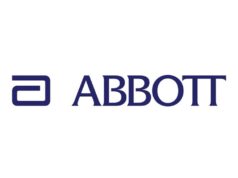
By John Camm and Karl-Heinz Kuck
The RCPE recently issued a two-page consensus statement relating to the management of atrial fibrillation.1 The main recommendations are that the detection of atrial fibrillation should be improved by establishing a national screening programme, that oral anticoagulation should be increased, perhaps by educating patients about the arrhythmia and its complications, that aspirin should not be used for stroke prevention, and that rhythm control should be used for symptom control. In addition, there are many other minor recommendations.
While none of the recommendations are inappropriate, the short consensus document does not allow adequate discussion of any issue or controversy, and the statement should be read in conjunction with the expert evidence provided to the panel.
EHRA has identified several areas where the general recommendations may be misleading. The panel recommends opportunistic screening with ECG for detection of atrial fibrillation, but in cases such as cryptogenic stroke, longer periods of monitoring (24 hours) are recommended. In the latter circumstance, there should be close cooperation between cardiologist and neurologist, and continuous monitoring with implanted devices may be needed. The panel also states that the mainstay of rate control therapy for symptom relief is beta blockade, but this is confusing since there are equally valid alternatives and very often treatment with multiple drugs is necessary to achieve adequate rate control while avoiding drug side effects. In general, the recommendations steer the physician away from rhythm control, although conceding that ablation treatment may be effective in the young with paroxysmal atrial fibrillation. Appropriately the consensus recommends that antiarrhythmic therapy should be considered by specialists, but disappointingly the document does not list other reasons for referral for specialist opinion, such as atrial fibrillation at an early age, suspicion of underlying heart disease, doubt about the best form of treatment, especially anticoagulation, etc.
The section on anticoagulation is more detailed and encourages thorough risk prediction of both thromboembolic and bleeding risks using contemporary scoring systems (congestive heart failure, hypertension, age ≥75 years, diabetes, stroke or transient ischaemic attack, vascular disease, age 64–75 years, and sex [CHA2DS2VASc] and hypertension, abnormal renal/liver function, stroke, bleeding history or predisposition, international normalised ratio, elderly, drugs/alcohol concomitantly [HAS-BLED]). The RCPE panel was very reticent about providing a whole-hearted recommendation for novel oral anticoagulants, limiting their use to those who “cannot tolerate, have an allergy to, or who cannot achieve satisfactory anticoagulant control on warfarin”. This guidance seems to run contrary to regulatory and other contemporary guideline advice, but is consistent with local recommendations from Health Improvement Scotland. The document includes a backing for left atrial appendage closure for patients who are at high risk of thromboembolism but unable to tolerate any anticoagulant therapy-this is the first official recommendation of this sort, which although welcome is lacking in important detail.
The consensus statement includes items relating to the education and involvement of patients with atrial fibrillation in the management of their own arrhythmia. Taken together the recommendations stress the importance of communication, the provision of information and the important role of patient engagement.
EHRA is pleased to see documents of this kind that indicate that local and national healthcare systems take a keen interest in atrial fibrillation, a condition that is rising in its prevalence to close on 2% of the general population, is associated with a five-fold risk of stroke and is clearly a matter of substantial public health importance. The consensus is, for the most part, in line with advice given in the European Society for Cardiology (ESC)/EHRA guidelines.2
John Camm is at St George’s University of London, London, UK, and Karl-Heinz Kuck is at St Georg’s Hospital, Hamburg, Germany.
References
1. Stott, et al. RCPE consensus statement. https://bit.ly/K1hORV
2. Camm, et al. European Heart Journal 2010: 31: 2369–2429









